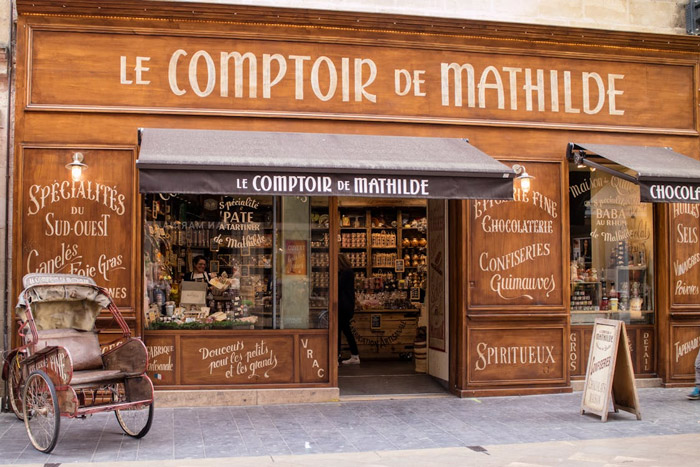Amid soaring rents and fragmented foot traffic in the physical retail industry, pop-up stores have emerged like a breath of fresh air. With their “short, fast, and lean” model, they have become a powerful new tool for brands to test new markets and reach younger audiences.
However, running a pop-up store is far from simply setting up a temporary stall. Every step—from carefully negotiating the location to strategically converting foot traffic—holds its own challenges. So, how can businesses turn “one-time visitors” into “long-term members” through pop-up stores?
Pop-Up Stores: A Low-Risk Springboard for SMEs to Test New Markets
For most small and medium-sized enterprises (SMEs), opening a physical store often means facing exorbitant rental costs. Against the backdrop of an unstable economic environment, return on investment can be as unclear as “viewing flowers through fog,” making it difficult to predict accurately.
The short-term nature of pop-up stores provides merchants with a low-risk “market-testing vessel,” allowing businesses to gain clearer insights into their product competitiveness and real customer feedback. This is why more and more brands are jumping on the pop-up trend.
Advantage 1: Lower Trial-and-Error Costs, Paving the Way for Physical Stores
Before committing significant capital to a permanent store, pop-up stores serve as a “touchstone.” They allow businesses to quickly test the market and deeply understand consumer reactions to products and concepts. This valuable data acts like a guiding light, providing solid support for future brick-and-mortar investments and enabling more confident decision-making.
Advantage 2: Low Cost, High Exposure—Creating a Brand’s “Highlight Moment”
Setting up a pop-up store in Hong Kong’s prime shopping districts—such as Central, Tsim Sha Tsui, Tsuen Wan, or Lai Chi Kok—is like placing a brand under a giant “spotlight.” The massive foot traffic in these areas significantly boosts brand visibility and captures public attention. At the same time, merchants can gauge local market reactions, gathering experience for future expansion.
Advantage 3: Driving Short-Term Sales & Bridging Online and Offline Channels
Many e-commerce brands struggle with limited sales channels, and pop-up stores fill this gap perfectly. Acting as a bridge, they not only attract potential online customers who haven’t yet converted but also turn in-store experiences into future online purchases, creating a virtuous cycle between online and offline sales.
Pop-Up Store Operations: Three Major Challenges & Solutions
Compared to traditional stores, pop-up stores are more like a meticulously planned, time-limited theater—full of both challenges and opportunities. When launching a pop-up, merchants may face three key hurdles, but with the right strategies, these can be turned into advantages.
Challenge 1: Juggling Multiple Tasks Under Time Pressure
Preparing a pop-up store often means tight deadlines and heavy workloads—venue setup, material printing, staff training, payment system testing—all must be completed within a limited timeframe. However, many merchants, lacking experience, often overlook critical details.
Solutions:
– Reverse Timeline Planning: Work backward from the opening date, breaking down key milestones (e.g., D-15: finalize venue contract, select & test POS system; D-10: start cross-training staff; D-3: conduct full-process stress tests). This acts like a precise roadmap, ensuring smooth progress.
– Lightweight Setup: Use modular designs (e.g., removable LED walls, mobile displays) to cut setup time to under 24 hours, saving both time and costs.
– Contingency Plans: Prepare for potential issues—e.g., backup payment methods (mobile + manual logs), online pre-orders for stock shortages, or mobilizing brand community KOCs as temporary staff.
Challenge 2: Surviving Peak Traffic Crunch Time
High foot traffic periods (weekends, events) test staff’s ability to handle pressure. Poor crisis management can damage customer experience and brand reputation.
Solutions:
– Tech Empowerment: Deploy smart payment terminals (multi-channel support: credit cards/AlipayHK/WeChat Pay) and real-time inventory APIs for seamless operations.
– Efficient Layouts: Design dual pathways—express lanes for single-item buyers and experience zones for browsing—plus queue management (snake rails + ticketing) to reduce wait times.
– Staff Drills: Train teams for “3-second checkouts” (scan → bag → upsell membership → farewell) and assign floaters to handle complaints/special requests.
Challenge 3: Turning One-Time Shoppers into Loyal Fans
The end of a pop-up event shouldn’t mean the end of customer engagement. The real challenge is nurturing one-time buyers into long-term loyalists.
Solutions:
– Instant Incentives: Offer membership perks (free samples + raffle tickets) or discounts (first-order rebates + double points) to boost sign-ups.
– Data Nurturing: Integrate OMO (Online-Merge-Offline) systems, tagging customers (e.g., “ingredient-focused,” “collaboration lovers”) for precision marketing.
– Emotional Bonds: Host exclusive events (product tastings, meet-the-designer sessions) and let members vote on product names/packaging using redeemable points, fostering belonging.
Conclusion
In an era of scarce attention, pop-up stores offer SMEs a low-cost playground for innovation. They test not just execution power but also a brand’s grasp of consumer psychology, tech trends, and data leverage. When brands transform pop-ups’ short-term buzz into long-term growth, they can carve out their own blue ocean in a red market—achieving sustainable success.

